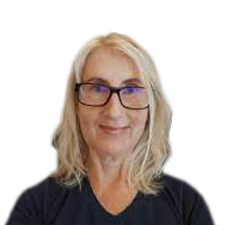Aging is a complex biological process that comes under the term ‘aging mosaic.’ The mosaic, in simple terms, refers to the complexity of normal aging which is a combination of endogenous (intrinsic) and exogenous (extrinsic) factors.
Anti-aging, in literal terms, refers to a process that can either halt the manifestations of the natural aging process or potentially reverse existing signs of aging. However, the term hasn’t been properly defined yet.
Why? Because anti-aging encompasses strategies and practices employed by professionals as well as manufacturers. This makes people question the authenticity of the term since it’s used as a marketing tagline or possibly a gimmick.
Reports show that over 62% of people living in the United States use an anti-aging product in their daily skincare regimen. The report went on to elaborate that only 11% of these people used sunscreen - depicting how attractive the term ‘anti-aging’ is.
What Causes Skin Aging?
Aging is a natural, complex and biological process influenced by a combination of intrinsic and extrinsic factors. Intrinsic factors are often uncontrollable, such as genetics, cellular turnover rates, hormones, and metabolism. Extrinsic factors are, however, modifiable. These include, light exposure, radiation, chemicals, and toxins.
Endogenous and exogenous factors cumulate to result in physiological alterations in the skin layer. These alterations are rarely (if ever) sudden. If anything, signs of aging typically appear in a person’s youth. Imbalances cause the appearance of ‘typical’ aging signs in the skin, such as fine lines, wrinkles, and sagging skin.
Signs of aging are, however, variable. For some people, aging might manifest in the appearance of atrophic or loosened skin with fine lines and wrinkles. For others, their skin might be hypertrophic and hyper-pigmented.
There are, nevertheless, certain factors that are common across all types of skin aging:
- Decreased cell turnover rate: your cellular turnover rate refers to the rate at which your skin cells repeat their regular life cycle. During your youth, your cellular turnover rate is greater and the constant supply of skin cells is replenished over and over again. A slower turnover rate results in sagging or loosening skin as well as poor wound healing.
- Reduced collagen production: Collagen is the major structural unit of the skin (along with elastin and fibrillin). A loss in type VII collagen causes a weakened bond between the dermis and epidermis.
- Reduction in Hyaluronic acid levels: Glycosaminoglycan (GAGs) levels decrease.
Manifestations of the natural aging process described above result in:
- Atrophic or hypertrophic skin
- Sun estasis (solar hyper-pigmentation in the skin)
- Loss of volume across the face
- Loss of bony support in underlying layers of the skin
- Improper wound healing and more apparent scar marks
- Appearance of fine lines and wrinkles
Understanding Commercial Anti-Aging
The authenticity of anti-aging products and procedures has been under scrutiny for several years because of commercial use of the term. The term is, understandably, quite an attractive tagline.
People all across the globe actively purchase and then replenish their supply of anti-aging products. Most of these products are supplied as cosmetic creams or lotions. Some are also supplied as pills and medicines.
Professional anti-aging treatments can be invasive or non-invasive. Their post operative instructions also include certain medications to be used to rejuvenate the skin.
Anti-aging skincare has become a blooming business with several manufacturers hopping onto the bandwagon. With a plethora of choices (there are often dedicated aisles for anti-aging products in supermarkets) people can be overwhelmed.
Additionally, anti-aging skin care products are not subject for approval by the Food and Drug Administration (FDA). There’s, therefore, no guarantee that any over-the-counter cosmetic products are effective.
The term “clinically proven” means that the product was given to consumers to try and does not mean the product underwent clinical trials and received FDA approval.
Check for the following on your product:
- Hypoallergenic – the product can still cause an allergic reaction but there is be a reduced risk
- Non-comedogenic or non-acnegenic - does not cause acne
- Consumer hotline – for contacting the company with questions
Related: Get Rid of Pimples and Acne with These Amazing Skin Tips
How to Keep Skin Youthful
1. Protect Your Skin From Chronic Sun Exposure:
It is virtually impossible to hide from the sun. Whether you’re out for a grocery run or stepped out for some fresh air, sun exposure is inevitable. Chronic sun exposure results in a condition known as sun ectasis - a form of hyper-pigmentation in the skin.
Chronic sun exposure isn’t solely linked with premature aging, but also with the development of skin cancer. While you can’t hide from the sun, you can minimize sun exposure by:
- Wearing sunscreen and then reapplying it every four to six hours.
- Use sun-protective clothing, such as; long-sleeved clothes and sunhats.
- The use of UV-ray protection sunglasses and eyewear.
2. Avoid Smoking and Excessive Alcohol Intake
There are several reasons (not all pertaining to skincare) to avoid smoking and excessive alcohol consumption. Smoking causes premature cell death. It is important to understand that your body’s collagen production decreases by 1% each year.
The manifestations of smoking might not be as apparent during the first few months when you’re smoking, but become more apparent as time goes on.
3. Diet Control
Natural aging will go on whether we want it to or not. We can, however, diminish the signs of aging by following a healthy lifestyle.
Diet control is particularly important to limit signs of aging. Studies show that increased intakes of refined carbohydrates and sugars accelerate signs of aging. Whereas fresh fruits and vegetables stimulate cellular production and collagen production.
4. Skincare
Anti-aging products contain replenishing components of the dermis. This includes:
- Collagen
- Elastin, and
- GAGs
Besides anti-aging products, you need to incorporate sunscreen, moisturizers, lotions, and cleansers in your skincare regimen for effective treatment.
5. Consult a Dermatologist
Perhaps the most certain way (or at least one with the highest effectiveness ratio) would be to consult a dermatologist. A professional can help in reducing accelerating factors for skin aging as well as using both invasive and non-invasive treatments for diminishing signs of aging.
Different Types of Anti-Aging Treatments
Non-invasive Treatments:
- Botulinum Toxin
- Liquid Facelift
- Face-Melting
- Chemical Peel
- Dermal Rolling
- Lasers, and
- Microdermabrasion
Invasive Treatments:
- A traditional face-lift
- A limited incision face-lift, and
- A neck lift
How to Reduce Premature Aging Skin
Six Effective Anti-Aging Tips:
- Drink more water and less caffeine.
- Eat more green vegetables and avoid refined carbohydrates and sugars.
- Add berries and nuts to your diet.
- Eat more citrus fruits.
- Add omega-3 saturated fats to your diet.
- Avoid excess sugar.
Conclusion
Aging is a complex biological process that scientists and manufacturers are yet to subdue entirely. They are, however, able to identify causative and accelerative factors associated with aging.
If you feel like your skin is aging prematurely with atrophic or hypertrophic skin, fine lines, wrinkles, and skin sagging contact a dermatologist today.
Your dermatologist will evaluate your skin and ask you about your diet, sleep, and lifestyle. They might order a cbc test with differential and some additional tests to determine the underlying skin malady.












